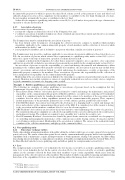Page 563 - SAIT Compendium 2016 Volume2
P. 563
IN 64 (3) Income Tax acT: InTeRPReTaTIon noTes IN 64 (3)
the immovable property for which it operates the share block scheme as well as the payment of rates and other local authority charges for services. It is compulsory for the members to contribute to the levy fund. On disposal of a share, the new member automatically becomes a contributor to the levy fund.
A share block company is a qualifying entity under section 10(1)(e)(i)(bb) unless it is a party to the type of transaction, operation or scheme discussed in 6.
4.1.3 Association of persons
An association of persons includes –
• a non-pro t company as de ned in section 1 of the Companies Act; and
• a voluntary association of members founded on a basis of mutual agreement whose intent and objectives are usually
set out in a formal founding document.
The Commissioner must be satis ed that the association of persons –
• has been formed solely for purposes of managing the collective interests common to members which includes
expenditure applicable to the common immovable property of such members and the collection of levies for which
such members are liable;* and
• is not permitted to distribute any of its funds to any person other than a similar association of persons.†
The Commissioner may prescribe conditions applicable to associations of persons in addition to those listed above (see 5.2). An association of persons which satis es these requirements is a qualifying entity under section 10(1)(e)(i)(cc) unless it is a party to the type of transaction, operation or scheme discussed in 6.
A company as de ned in the Companies Act (other than a non-pro t company), any co-operative, close corporation and trust are speci cally excluded as associations of persons and do not qualify for the exemption under section 10(1)(e). An association of persons accepts the responsibility to control and manage the nancial and administrative affairs pertaining to the common immovable property on behalf of its members. An association of persons may include home owners’ associations, and associations formed to control and manage the maintenance, security or appearance of the immovable property common to the members. These associations of persons take responsibility for the collection of
levies and payment of expenditure for the common immovable property.
Membership of the association of persons is linked to the ownership or occupation of a particular unit or portion of the
property. Members may include residents or owners of a particular residential area such as security estates, complexes or gated communities or tenants of a shopping centre or mall.
Example 1 – Entities qualifying as associations of persons
The following are examples of entities qualifying as associations of persons based on the assumption that the requirements of section 10(1)(e)(i)(cc) have been met:
• Green Estate Home Owners’ Association has been formed to control and manage the maintenance and general
expenditure on the common immovable property of Birchwood Estate, a security estate consisting of 30 residential stands. It is compulsory under its founding document for all the owners to be members of the association and to contribute levies in order to defray expenditure incurred on the common immovable property. These expenses include maintenance of the pavements, perimeter fence or wall, entrance gardens, guard house and security.
• City Mall Merchants’ Association was formed by the developers of a shopping mall to control and manage the décor and aesthetics of the common immovable property of the Mall. It is compulsory for all the tenants to belong to the association and the members contribute levies to cover the relevant expenses.
• ABC Residents’ Association is an association of persons formed to control and manage the security of a gated area. The residents in this gated community are collectively responsible for the costs of security patrols, the security gates and perimeter fencing. The residents are required to pay a monthly levy to defray the security costs.
• Gated Community Residents’ Association was formed by private home owners in a residential area for purposes of controlling and managing the maintenance of the common road, security fencing, entrance boom gates and the cost of hiring security personnel. Membership of the association is voluntary. The owners of the residential stands contribute to the collective maintenance and upkeep of the common facilities.
4.2 Non-qualifying entity
4.2.1 Time-share exchange entities
Under a time-sharing arrangement members of the public obtain the exclusive right to use or occupy a property for a speci ed period each year. The owners of time-share points do not own the common immovable property and are not responsible for expenditure such as maintenance, repairs and improvements or bond repayments, relating to the property. An entity selling time-sharing interests in holiday accommodation to members of the public not implemented under the Sectional Titles Act or the Share Blocks Control Act is not a qualifying entity and will not qualify for exemption under section 10(1)(e).
4.3 Levy
The exemption under section 10(1)(e)(i) is limited to the levy income received by or accrued to qualifying entities. The term ‘levy’ is not de ned in the Act. In the context of section 10(1)(e) the levies received by or accrued to qualifying entities are the amounts collected by them from their members to pay certain expenditure which arises from the management of the collective interests of the members. The members would be responsible for paying and administering their share of the expenditure if it were not for the qualifying entities that manage their collective interests.
* Section 10(1)(e)(i)(cc)(a). † Section 10(1)(e)(i)(cc)(b).
saIT comPendIum oF Tax LegIsLaTIon VoLume 2 555


